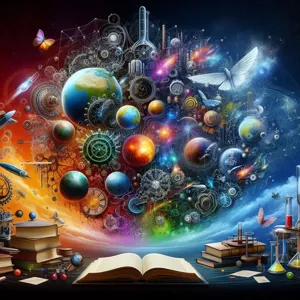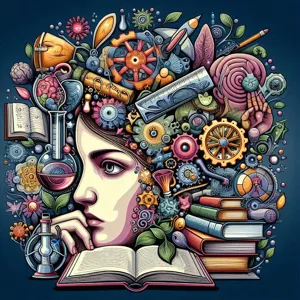As humanity stands on the brink of a new era in space exploration, the allure of the cosmos beckons us with promises of discovery and adventure.
With each ambitious mission aimed at unraveling the mysteries of the universe, from the icy moons of Jupiter to the dusty plains of Mars, we are reminded that venturing beyond our home planet is no simple feat. Navigating the vast expanse of space presents a myriad of challenges, ranging from the harsh realities of extreme temperatures and radiation exposure to the intricate logistics of life support and astronaut well-being. Additionally, the technological hurdles and financial constraints that come with long-term space missions often leave scientists and engineers grappling for innovative solutions. In this blog post, we will delve into the key challenges faced by space explorers, shedding light on the complexities involved in humanity’s quest to understand and inhabit the universe beyond our blue planet. Join us as we explore the trials, tribulations, and triumphs of navigating the cosmos!
1. Introduction to Space Exploration
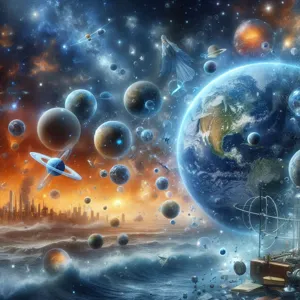
Space exploration has long captivated the human imagination, igniting a fervor for discovery that transcends earthly boundaries. From the first tentative steps of the Soviet Union’s Sputnik satellite in 1957 to the ambitious missions of today, humanity’s quest to explore the cosmos has evolved into a complex tapestry of scientific pursuit, technological innovation, and geopolitical intrigue. This endeavor is driven by an insatiable curiosity—an innate desire to understand not only the universe we inhabit but also our place within it.
At its core, space exploration is about pushing the limits of human capability. It involves sending probes to distant planets, launching rovers to traverse alien landscapes, and even planning crewed missions to Mars and beyond. Each mission is a monumental challenge, requiring meticulous planning, advanced engineering, and a deep understanding of the intricacies of space travel. The vastness of space presents not only awe-inspiring wonders but also formidable obstacles, including the harshness of the environment, the vast distances between celestial bodies, and the need for life support systems that can sustain astronauts in isolation for extended periods.
As we embark on this journey through the key challenges of space exploration, we will delve into the technological hurdles, the health implications for astronauts, the financial constraints faced by space agencies, and the ethical considerations of exploring and potentially colonizing other worlds. Each of these factors plays a crucial role in shaping the future of space exploration, influencing decisions that could redefine humanity’s relationship with the cosmos. Join us as we navigate the complexities of this exciting frontier, where the possibilities are as limitless as the universe itself.
2. Historical Milestones in Space Exploration
The journey of space exploration is punctuated by remarkable historical milestones that have shaped our understanding of the cosmos and our place within it. Each achievement represents not only a triumph of human ingenuity but also a stepping stone for future exploration.
One of the most iconic milestones occurred on October 4, 1957, when the Soviet Union launched Sputnik 1, the world’s first artificial satellite. This monumental event marked the dawn of the Space Age and ignited a fierce rivalry known as the Space Race, prompting nations to invest heavily in space technology and exploration.
Just a few years later, on June 16, 1963, Valentina Tereshkova became the first woman to travel into space, orbiting the Earth aboard Vostok 6. Her flight was a groundbreaking achievement that not only challenged gender norms but also inspired generations of women to pursue careers in science and engineering.
The United States made history on July 20, 1969, when Apollo 11 successfully landed astronauts Neil Armstrong and Buzz Aldrin on the lunar surface. Armstrong’s famous words, “That’s one small step for man, one giant leap for mankind,” resonated around the globe, symbolizing humanity’s first steps on another celestial body. This mission not only fulfilled President John F. Kennedy’s ambitious goal but also sparked a new era of scientific inquiry and exploration.
Following lunar missions, the launch of the Space Shuttle program in 1981 opened the door for more extensive human activity in space, including the deployment of satellites and construction of the International Space Station (ISS). The ISS, which began its assembly in 1998, serves as a testament to international collaboration, hosting astronauts from various countries as they conduct experiments that could pave the way for future deep-space missions.
More recently, the successful landing of NASA’s Perseverance rover on Mars in February 2021 marked another significant milestone. Equipped with advanced technology, Perseverance is tasked with exploring the Martian surface and searching for signs of past life, as well as collecting samples that could be returned to Earth in future missions.
These milestones not only highlight the technological advancements achieved over the decades but also reflect humanity’s innate curiosity and determination to explore the unknown. Each step taken in space exploration builds upon the last, creating a legacy of discovery that continues to inspire new generations to look upward and dream beyond the stars.
3. The Vastness of Space: Understanding the Challenges
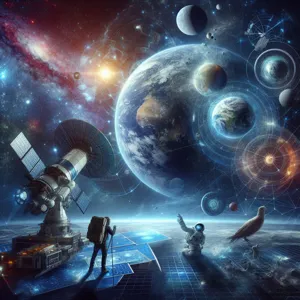
The vastness of space is both awe-inspiring and daunting, presenting a myriad of challenges that space explorers must confront. Imagine standing on Earth, looking up at the night sky, where countless stars twinkle from unimaginable distances. Each of those celestial bodies is light-years away, and navigating this expansive frontier requires not only advanced technology but also a deep understanding of the complexities involved.
One of the primary challenges posed by the vastness of space is the sheer scale of distance. For instance, our closest neighbor, Proxima Centauri, is approximately 4.24 light-years away, which translates to over 24 trillion miles. Current spacecraft are not equipped to travel anywhere near those speeds, meaning that even sending a probe to the nearest star system could take decades, if not centuries. This immense distance complicates mission planning, as scientists must carefully consider the trajectory, fuel requirements, and potential hazards over such long time frames.
Moreover, the vastness of space introduces significant communication delays. When sending signals to and from distant spacecraft, what might seem like a simple conversation on Earth can take minutes, hours, or even days. For example, it takes about 13 minutes for signals to travel between Earth and Mars at their closest approach. This delay means that mission control must pre-plan and anticipate challenges, as real-time troubleshooting is often impossible.
Additionally, the emptiness of space is a hostile environment. The vacuum presents challenges such as radiation exposure, extreme temperatures, and micrometeoroid impacts. Spacecraft must be meticulously designed to withstand these conditions, requiring innovative engineering solutions. Astronauts face health risks from prolonged exposure to microgravity, which can lead to muscle atrophy and bone density loss, further complicating long-duration missions.
In summary, the vastness of space is not merely a backdrop for exploration; it is a formidable challenge that shapes every aspect of space missions. As humanity continues to reach for the stars, understanding and overcoming these challenges will be crucial for the success of our ventures into the cosmos.
4. Technical Challenges: Engineering and Technology
When it comes to space exploration, the technical challenges are as vast and complex as the cosmos themselves. The engineering and technology required to send humans and machines beyond Earth’s atmosphere are at the forefront of innovation, pushing the boundaries of what is possible. From designing spacecraft that can withstand extreme temperatures and radiation to developing propulsion systems capable of traversing the vastness of space, engineers face monumental tasks.
One of the primary hurdles is ensuring the safety and reliability of the spacecraft. Every component, from life support systems to navigation instruments, must function flawlessly under the harsh conditions of space. For instance, materials must be selected not only for their strength but also for their ability to endure temperature fluctuations that can range from scorching heat to bone-chilling cold, depending on the proximity to the sun or the presence of cosmic radiation.
Moreover, the technology that drives space missions is constantly evolving. Each mission presents an opportunity to test new engineering concepts and innovations. For example, the use of 3D printing in space to create tools and spare parts on-demand is a revolutionary step that could significantly reduce the amount of equipment that needs to be launched from Earth. However, the implementation of such technologies requires rigorous testing and validation to ensure they can operate in the unforgiving environment of space.
Additionally, the challenge of communication cannot be overlooked. As spacecraft venture farther from Earth, the delay in signals poses unique difficulties in navigation and data transmission. Engineers must develop sophisticated systems that can autonomously make decisions based on pre-programmed algorithms, ensuring that missions can continue smoothly even when real-time communication is impossible.
In summary, the technical challenges of space exploration are multi-faceted and require a collaborative effort from scientists, engineers, and technologists. Each breakthrough in engineering not only brings us closer to understanding the universe but also paves the way for future missions that could one day lead to human habitation on other planets. As we continue to navigate the cosmos, overcoming these challenges will be crucial in our quest to explore and understand the final frontier.
5. Human Factors: The Psychological Impact of Deep Space Travel

As we venture further into the cosmos, the psychological impacts of deep space travel emerge as a critical consideration for mission planners and astronauts alike. Unlike a simple journey to the International Space Station, deep space missions—such as those aimed at Mars or beyond—can last for months or even years, creating unique challenges that extend far beyond the technical aspects of space flight.
Isolation is one of the most significant psychological hurdles. Astronauts will be confined in a small spacecraft, far from familiar surroundings and loved ones, with limited social interaction. This prolonged separation from Earth can lead to feelings of loneliness, anxiety, and depression. The confined living quarters, combined with the immense stress of their responsibilities, can exacerbate these feelings, resulting in a decline in mental well-being. To combat this, mission teams must carefully select crew members, ensuring that they can work well together, manage stress, and support each other through challenging times.
Additionally, the monotony of life in space presents its own set of psychological challenges. The repetitive daily routines, coupled with the lack of sensory stimulation, can lead to boredom and disengagement. To maintain morale, it’s essential for astronauts to have scheduled recreational activities, entertainment options, and opportunities for creative expression. Providing avenues for relaxation, such as virtual reality experiences or hobbies like drawing or writing, can help mitigate the effects of monotony.
Furthermore, the concept of time can shift dramatically during long-duration space missions. The absence of natural light cycles and the constant rhythm of space travel can disrupt astronauts’ circadian rhythms, leading to sleep disturbances. Sleep deprivation can have a compounding effect on mental health, impairing cognitive functions and emotional stability. Implementing structured sleep schedules and creating a sleep-conducive environment within the spacecraft are vital strategies for ensuring that astronauts remain well-rested and mentally sharp.
In summary, addressing the human factors associated with deep space travel is paramount for the success of future missions. By prioritizing mental health and well-being, space agencies can equip astronauts with the tools and support they need to navigate the psychological challenges of exploring beyond our planet. As we continue to push the boundaries of space exploration, understanding and mitigating these human factors will be essential in ensuring that our journeys into the cosmos are not only successful but also sustainable.
6. Funding and Resource Allocation for Space Missions
Funding and resource allocation pose significant challenges in the realm of space exploration, often determining the success or failure of ambitious missions. Unlike traditional projects, space missions require substantial financial investment, intricate planning, and meticulous management of resources. The high costs associated with launching spacecraft, conducting research, and sustaining long-term projects can be daunting for both governmental space agencies and private enterprises.
Government funding for space exploration typically hinges on political priorities and public interest, which can fluctuate with changing administrations and shifting national agendas. As a result, many projects face uncertainty, leading to delays or cancellations that can derail years of research and development. For instance, the ambitious plans for Mars colonization or the return of humans to the Moon could easily be sidelined by budget cuts or reallocations to other pressing issues.
On the private sector front, companies like SpaceX and Blue Origin have emerged as key players, but even they contend with the challenge of securing adequate funding. Investors are often drawn to the promise of innovation and profit, yet the inherent risks of space exploration can make securing capital a precarious endeavor. Balancing the books while pushing forward with cutting-edge technology requires a careful dance; companies must not only innovate but also present persuasive cases for the long-term viability of their projects to maintain investor confidence.
Moreover, resource allocation within missions is an intricate balancing act. Engineers and scientists must prioritize which technologies and experiments will be included in a mission, often making tough decisions about which aspects to scale back or omit entirely. For example, the choice between launching a more advanced spacecraft with limited payload capacity versus a simpler vehicle capable of carrying more scientific instruments can significantly impact the data collected and the mission’s overall success.
In navigating these challenges, collaboration between governments, private companies, and international partners has become increasingly important. By pooling resources and expertise, stakeholders can share the financial burden and enhance the potential for groundbreaking discoveries. Ultimately, effective funding and resource allocation are critical to ensuring the ambitious goals of space exploration are not only envisioned but also realized, allowing humanity to continue its quest to understand the cosmos.
7. The Risks of Space Travel: Safety Protocols and Failures
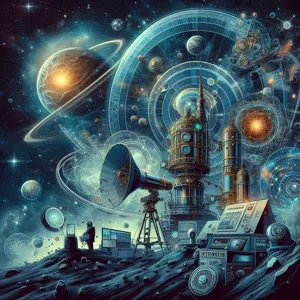
Space exploration, while a testament to human ingenuity, is fraught with significant risks that demand rigorous safety protocols and a keen understanding of potential failures. The cosmos may beckon with promises of discovery and adventure, but the harsh reality is that space is an unforgiving frontier, where even the smallest oversight can lead to catastrophic consequences.
One of the most pressing challenges in space travel is ensuring the safety of astronauts. From launch to landing, every stage of a mission is meticulously planned and executed, with layers of safety protocols in place. These include comprehensive training programs for astronauts, extensive simulations, and the implementation of redundant systems designed to take over in case of malfunctions. For example, the Space Shuttle program employed multiple safety checks and fail-safes, allowing for quick responses to issues such as engine failures or cabin depressurization.
However, history has shown that even the most stringent protocols can falter. The tragic losses of the Challenger and Columbia missions serve as sobering reminders of the inherent dangers of space travel. Both accidents were the result of complex failures, highlighting the need for continuous assessment and improvement of safety measures. Investigations revealed that factors such as communication breakdowns, organizational culture, and technical flaws played critical roles in these disasters, prompting agencies like NASA to reevaluate their safety practices and protocols.
Moreover, the environment of space itself poses unique threats. Cosmic radiation, microgravity effects, and the potential for space debris collisions are just a few of the challenges astronauts face. To combat these dangers, researchers are developing advanced shielding technologies and conducting studies on the long-term health impacts of prolonged space travel. Protocols are also in place for emergency situations, such as the evacuation of the International Space Station in the event of a significant threat.
In addition to physical risks, psychological factors must be considered. The isolation and confinement of space missions can take a toll on mental health, making it crucial to monitor the well-being of crew members and provide support systems. Implementing regular check-ins and creating a strong team dynamic are essential for maintaining morale and ensuring that astronauts remain focused and resilient during their journeys.
As we continue to push the boundaries of space exploration, it is clear that the risks associated with travel beyond our planet are ever-present. However, through diligent attention to safety protocols, lessons learned from past failures, and innovative solutions to emerging challenges, we can work toward a future where the wonders of the universe become more accessible while prioritizing the safety of those who dare to explore it.
8. Environmental Challenges: Space Debris and Cosmic Radiation
As humanity ventures further into the cosmos, two critical environmental challenges loom large: space debris and cosmic radiation. Both pose significant threats to the safety and success of space missions, requiring innovative solutions and meticulous planning.
**Space Debris:** The growing cloud of space debris—fragments from defunct satellites, spent rocket stages, and remnants of past collisions—presents a pervasive hazard to operational spacecraft. With millions of pieces orbiting Earth at high velocities, even a small fragment can cause catastrophic damage upon impact. This risk is compounded by the increasing number of satellites being launched into orbit, creating a crowded environment that heightens the potential for collisions. To mitigate this threat, space agencies and private companies are exploring various debris mitigation strategies, such as designing satellites with end-of-life disposal plans and developing technologies for debris removal. However, the challenge remains immense, as debris continues to accumulate faster than it can be removed, necessitating global cooperation and adherence to space traffic management protocols.
**Cosmic Radiation:** Beyond the confines of Earth’s protective atmosphere lies the invisible menace of cosmic radiation—high-energy particles originating from the sun and deep space. This radiation poses significant health risks to astronauts, potentially leading to acute radiation sickness, increased cancer risk, and long-term damage to vital organs. As missions extend beyond low Earth orbit, particularly to destinations like Mars, understanding and shielding against this radiation becomes paramount. Current research focuses on developing advanced materials and technologies to protect astronauts, such as radiation-hardened habitats and personal protective gear. Additionally, the implementation of monitoring systems to track radiation exposure in real-time is crucial for ensuring crew safety during extended missions.
Together, these environmental challenges highlight the complexities of space exploration. As we strive to unlock the mysteries of the universe, addressing the risks associated with space debris and cosmic radiation will be essential in paving the way for safer and more sustainable journeys beyond our planet. The future of space exploration hinges on our ability to navigate these challenges, ensuring that humanity can continue to reach for the stars with both ambition and responsibility.
9. The Importance of International Collaboration
As humanity sets its sights beyond the confines of our planet, the importance of international collaboration in space exploration becomes increasingly evident. The vastness of space presents challenges that no single nation can tackle alone. From the intricacies of developing advanced technology to ensuring the safety of astronauts venturing into the unknown, collaboration across borders is essential for success.
International partnerships enable countries to pool their resources, expertise, and knowledge, fostering innovation that transcends individual capabilities. For example, the International Space Station (ISS) serves as a testament to what can be achieved when nations unite for a common purpose. This remarkable orbiting laboratory, a collaboration among five space agencies—NASA, Roscosmos, ESA, JAXA, and CSA—has provided invaluable insights into life in space, advancing our understanding of human physiology and the effects of microgravity.
Moreover, international collaboration can significantly reduce costs associated with space missions. By sharing the financial burden, countries can allocate their resources more efficiently, paving the way for ambitious projects like Mars exploration or asteroid mining. Joint missions also facilitate technology transfer and the development of new capabilities that might be out of reach for individual nations.
However, international collaboration isn’t just about shared funding and resources; it also fosters a spirit of unity and shared responsibility. It helps build diplomatic relationships and encourages peaceful coexistence in a realm that has often been associated with competition. In an age where the challenges of climate change and global security are interwoven, space exploration can become a platform for nations to work together, proving that when we collaborate, the possibilities are limitless.
As we venture further into the cosmos, the significance of international partnerships will only grow. The future of space exploration hinges on our ability to come together, share our dreams, and tackle the challenges that lie ahead. After all, the universe is a vast tapestry of wonders waiting to be explored, and it is through collaboration that we will uncover its secrets.
10. Ethical Considerations in Space Exploration
As humanity ventures further into the cosmos, the ethical considerations surrounding space exploration have become increasingly complex and critical. The excitement of discovery is accompanied by profound questions that extend far beyond the realms of science and technology. One of the foremost concerns involves the potential for contamination of other celestial bodies. The possibility of Earth microbes hitching a ride on spacecraft could jeopardize extraterrestrial ecosystems, potentially leading to irreversible damage to environments that have evolved over billions of years.
Moreover, as we explore and possibly exploit resources from celestial bodies like asteroids or the Moon, ethical dilemmas arise regarding ownership and rights. Who truly owns the resources of the cosmos? Is it justifiable for nations or corporations to claim ownership of asteroids or lunar land, or should these celestial territories be considered the common heritage of all humankind? The Outer Space Treaty of 1967 attempts to address these issues, but as technology advances and the race for extraterrestrial resources intensifies, the need for updated regulations becomes apparent.
Another layer of ethical complexity is introduced when considering the implications of colonization. If humans establish settlements on other planets or moons, what responsibilities do we have towards potential indigenous life forms—if they exist? Furthermore, how do we ensure that new worlds are not subject to the same exploitation and environmental degradation that has plagued our own planet? The ethical framework guiding space exploration must prioritize sustainability and respect for the unknown.
Finally, the question of human life in space raises significant ethical concerns. As missions become longer and more ambitious, the risks to astronauts increase. How do we balance the pursuit of knowledge with the safety and well-being of those who brave the final frontier? Each of these ethical considerations requires thoughtful dialogue among scientists, policymakers, and society at large, ensuring that as we navigate the vast expanse of space, we do so with responsibility and foresight. In navigating the cosmos, we must remain vigilant stewards, ensuring that our exploration not only advances human knowledge but also honors the integrity of the universe we seek to understand.
11. Future Technologies: Innovations on the Horizon
As we stand on the brink of a new era in space exploration, the future holds a treasure trove of innovations poised to transform our understanding of the cosmos. The rapid pace of technological advancement is igniting imaginations and fostering groundbreaking ideas that promise to address some of the most pressing challenges faced by space agencies and private enterprises alike.
One of the most exciting developments on the horizon is the potential for advanced propulsion systems, such as ion drives and nuclear thermal propulsion. These technologies could significantly reduce travel times to distant destinations like Mars or the outer planets, making missions more feasible and opening up the possibility for more extensive exploration. Imagine reaching Mars in a matter of weeks instead of months—this transformation could revolutionize not only how we travel through space but also how we conduct scientific research en route.
Another area of innovation lies in habitat construction and sustainability. As we look toward establishing permanent outposts on the Moon and Mars, new technologies in 3D printing and in-situ resource utilization (ISRU) are critical. These advancements will allow us to create habitats from local materials, reducing the need to transport everything from Earth and ensuring that astronauts can live and work comfortably in these harsh environments.
Artificial intelligence (AI) and machine learning are also making waves in space exploration. By enhancing data analysis capabilities, AI can help sift through the vast amounts of information collected by telescopes and rovers, identifying patterns and anomalies that might otherwise go unnoticed. Furthermore, autonomous systems powered by AI can support missions by making real-time decisions, reducing the burden on human operators and increasing the efficiency of exploration efforts.
Finally, the advent of new materials, including lightweight composites and radiation-resistant substances, will be crucial in building spacecraft that can withstand the rigors of deep space travel. These innovations not only promise to enhance the safety and performance of our vehicles but also play a pivotal role in ensuring the longevity of manned missions beyond our planet.
In the face of these exciting developments, the future of space exploration looks bright. As we harness these innovations, we will not only overcome existing challenges but also embark on a journey that may one day allow humanity to thrive among the stars. With each new technology, we inch closer to unraveling the mysteries of the universe, revealing the vast possibilities that lie beyond our home planet.
12. The Role of Robotics and AI in Space Missions
As we venture deeper into the cosmos, the integration of robotics and artificial intelligence (AI) into space missions has emerged as a cornerstone of modern exploration. These technologies are not just tools; they are indispensable partners that enhance our capabilities and expand our horizons in ways previously unimaginable.
Robots have long played a critical role in space exploration, from the Mars rovers that traverse the red planet’s rugged terrain to the robotic arms that assist astronauts aboard the International Space Station (ISS). These machines are designed to withstand the harsh conditions of space, operating in environments that would be inhospitable—or even lethal—to humans. For instance, the autonomous capabilities of the Perseverance rover allow it to navigate complex landscapes and perform scientific experiments without real-time human intervention, thus maximizing its operational efficiency and data collection capabilities.
AI further amplifies these robotic functions. With advanced algorithms and machine learning, AI systems can analyze vast amounts of data, make real-time decisions, and even predict potential challenges before they arise. This technology is crucial for missions to distant planets, where communication delays can hinder timely responses from mission control. By enabling robots to adapt to unexpected situations on their own, AI ensures that we can gather crucial data and carry out experiments even when direct human oversight is not possible.
Moreover, the synergy between robotics and AI paves the way for ambitious future endeavors, such as crewed missions to Mars or deep-space exploration missions. Imagine autonomous drones scouting the surface of another planet, sending back critical information while humans remain safely aboard their spacecraft. This not only enhances safety but also optimizes our exploration strategies, allowing for more efficient use of time and resources.
In summary, the role of robotics and AI in space missions is transformative. As we continue to push the boundaries of our knowledge and capabilities, these technologies will be at the forefront, guiding us through the vast and uncharted territories of the universe. Embracing this technological evolution is essential if we hope to unlock the secrets of the cosmos and pave the way for humanity’s future among the stars.
13. The Quest for Life Beyond Earth
The quest for life beyond Earth is one of the most tantalizing and profound challenges in space exploration, capturing the imagination of scientists, researchers, and space enthusiasts alike. The vastness of the universe, with its billions of galaxies, each containing countless stars and potentially habitable planets, raises the compelling question: Are we alone?
As we embark on this quest, we face several hurdles that must be overcome. First and foremost is the sheer distance between our planet and the nearest celestial bodies that may harbor life. For instance, Mars, often regarded as our closest neighbor in the search for extraterrestrial life, is still millions of kilometers away, posing significant challenges for exploration missions. Advanced technology and innovative spacecraft are crucial for conducting sustained studies on these distant worlds.
Additionally, the conditions necessary for life as we know it are incredibly specific. Scientists are not only searching for signs of intelligent life but are also broadening their criteria to include microbial life that may thrive in extreme environments. This has led to explorations of moons like Europa and Enceladus, both of which are believed to harbor subsurface oceans that could potentially support life. However, landing on these icy bodies and analyzing their surfaces poses significant technical challenges, including the need for advanced landing systems and the ability to penetrate thick ice layers.
Moreover, the search for extraterrestrial intelligence (SETI) introduces its own set of challenges. The vastness of space means that signals from other civilizations, if they exist, are diluted and may take years or even centuries to reach us. Developing sophisticated listening arrays to capture these faint signals and deciphering them into meaningful data is a monumental task that requires relentless dedication and cutting-edge technology.
Finally, the philosophical implications of finding life beyond Earth cannot be overstated. What does it mean for humanity to discover that we are not alone? How will it reshape our understanding of our place in the universe? The quest for life beyond Earth is not just a scientific endeavor; it is a deeply human journey, one that challenges our beliefs, ignites our curiosity, and pushes the boundaries of what we know about life itself. As we continue to explore the cosmos, each step forward brings us closer to answering one of humanity’s oldest questions: Are we truly alone in the universe?
14. Public Interest and Support for Space Exploration
Public interest and support for space exploration play a crucial role in advancing our understanding of the universe. The cosmos captivates the human imagination, sparking curiosity that transcends generations. However, fostering and maintaining this interest presents several challenges, particularly in an era where pressing terrestrial issues often dominate headlines and public discourse.
One of the primary obstacles is the perception that space exploration is a luxury rather than a necessity. In times of economic hardship or social unrest, the immense budgets allocated to space missions can come under scrutiny. Critics often argue that these funds could be better spent addressing immediate concerns on Earth, such as poverty, healthcare, or climate change. To navigate this challenge, space agencies and advocates must articulate the broader benefits of space exploration, highlighting how advancements in technology, environmental monitoring, and even potential solutions to resource shortages can arise from investing in the cosmos.
Moreover, public engagement is vital for sustaining interest in space endeavors. Events like rocket launches or rover landings capture attention, but they are often fleeting moments in a continuous journey of discovery. Educational outreach programs, interactive exhibits, and community involvement can ignite a passion for space that goes beyond the occasional viral news story. Collaborations with schools and universities to integrate space science into curricula not only cultivate a future generation of scientists and engineers but also foster a deeper appreciation for the exploration of our universe.
Finally, the rise of private space companies has introduced a new dynamic to public interest. While these entities have made space more accessible and exciting, they also challenge traditional narratives about who gets to explore the cosmos and for what purpose. As commercial ventures expand the landscape of space exploration, public perception will need to adapt accordingly. Balancing the excitement of private initiatives with the ethical considerations of space exploration will be crucial in maintaining widespread support and ensuring that the quest for knowledge continues to thrive.
In summary, sustaining public interest and support for space exploration requires a multifaceted approach. By effectively communicating the benefits of space endeavors, engaging communities, and navigating the evolving landscape of private industry, we can inspire a collective commitment to uncovering the mysteries of the universe—and ensuring that space exploration remains a priority for generations to come.
15. Conclusion: The Future of Humanity in Space
As we stand on the precipice of a new era in space exploration, the future of humanity in the cosmos is both exhilarating and uncertain. The challenges we’ve discussed—technological limitations, environmental concerns, and the psychological effects of long-duration space travel—are formidable, but they are not insurmountable. With each mission to the International Space Station, every rover sent to Mars, and the ambitious plans for lunar bases, we are not merely exploring; we are laying the groundwork for humanity’s next chapter.
The potential benefits of space exploration are staggering. From the pursuit of scientific knowledge that can unlock the secrets of our universe to the prospect of discovering resources that could alleviate earthly problems, the cosmos holds promises that could redefine our existence. As we venture further into space, developing sustainable practices will be crucial, ensuring we do not repeat the mistakes of our past on a planetary scale.
Moreover, the collaboration among nations and private enterprises is paving the way for a new kind of exploration, one where the spirit of unity and shared ambition can propel us into the unknown. Initiatives like the Artemis program aim not just to return humans to the Moon but to establish a lasting presence that can serve as a springboard for future missions to Mars and beyond.
In this evolving landscape, we must remain committed to fostering innovation, enhancing international cooperation, and prioritizing the safety and well-being of those who dare to journey into the void. As we look to the stars, we are reminded that the exploration of space is not just about reaching new frontiers; it is about ensuring a sustainable future for humanity, one where we can thrive both on our home planet and amongst the stars.
As we conclude this exploration of the challenges facing humanity in space, it’s clear that while the road ahead may be fraught with difficulties, the possibilities are as infinite as the universe itself. The journey is just beginning, and with it, the hope that one day, we will not merely be visitors in the cosmos but inhabitants of a multi-planetary future.
As we conclude our exploration of the key challenges of space exploration, it becomes clear that the journey beyond our atmosphere is as complex as it is captivating. From the intricacies of spacecraft design to the unpredictable nature of space environments and the profound implications of human health in zero gravity, each hurdle presents both a challenge and an opportunity for innovation. As we continue to push the boundaries of our knowledge and technology, the insights gained from overcoming these obstacles will not only pave the way for future missions but also inspire generations to dream beyond the stars. Together, we stand on the brink of a new era in space exploration—one filled with promise and the potential to unlock the mysteries of the universe. Thank you for joining us on this cosmic journey, and we invite you to stay tuned as we continue to delve into the wonders and challenges that await us in the final frontier.



